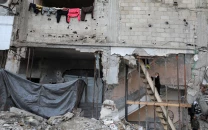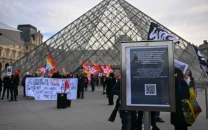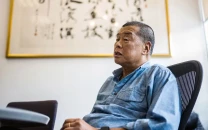The village that just refused to die
Cu Chi harboured the most resilient, determined rice farmers, who along with regulars, took on a superpower.

anwer.mooraj@tribune.com.pk
The story of Cu Chi reads like a thriller. It is a saga of underground tunnels, survival and heroism. Cu Chi was selected for the resistance for four important reasons. The ground consists of clay and is hard to destroy. The forest is full of tall bamboo trees and targets couldn’t easily be seen from the air. The site was near the Saigon River; and the US Army base was five miles away. Digging of the tunnels was started in 1946 to conceal weapons and food and to hide from the French. It took another 20 years to complete 250 kilometres of underground passages. There were three levels of tunnels. The first was for combat. The second for holding meetings where participants covered their faces with scarves because of the possible presence of spies, and contained a hospital, cooking quarters and a place where the guerrillas could rest. And the third was primarily for escaping and was strewn with a variety of traps.
The guerrillas would not drink the water of the Saigon River for fear it might be poisoned and so dug their own well. Women guerrillas wore black so they would be taken for village women. One of them, a girl of 17 knocked out a tank when she fired a rocket launcher. The fighters were so poor they used old tyres for sandals, which they wore backwards to convey wrong information to the enemy about their movements. And they used broken mortar shells to construct the many traps. While I walked on the uneven surface, two nagging questions remained unanswered. What did the diggers do with the earth they dislodged? And where did they get the oxygen to breathe? My guide, who obviously read my mind, pointed to a number of mounds of earth and stones every few yards that looked like anthills, but these mounds had a number of small holes near the base. In that one moment, my guide had answered both questions.
Ho Chi Minh City today is a peaceful, vibrant, metropolis of almost 10 million inhabitants and nine million motorcycles. The people are very friendly, both in the town and in the four islands of the Mekong Delta where I spent the next day, had the most delicious lunch and was absolutely amazed by the array of gifts manufactured from coconuts and rice paper. The Vietnamese have not lost their gift for innovation. They have long forgotten the war and are moving forward. As I look back on the delicious cuisine, the smiling faces and the warm hospitality, I know I wouldn’t have missed this trip for anything.
Published in The Express Tribune, February 10th, 2013.


















COMMENTS
Comments are moderated and generally will be posted if they are on-topic and not abusive.
For more information, please see our Comments FAQ